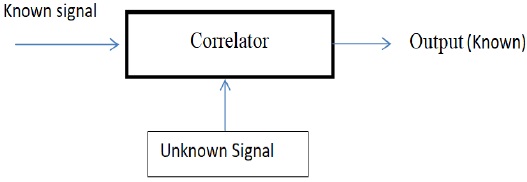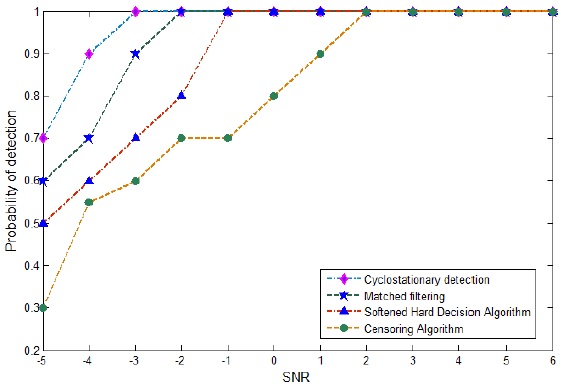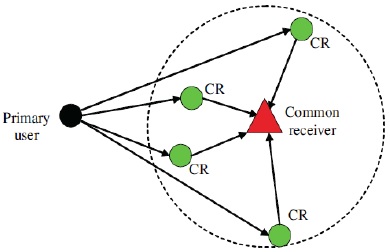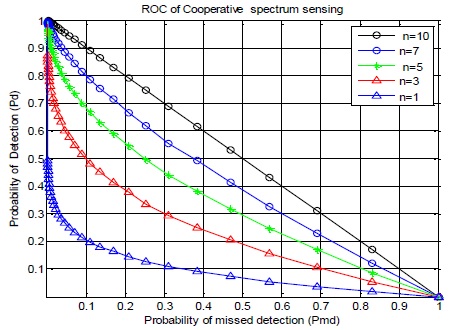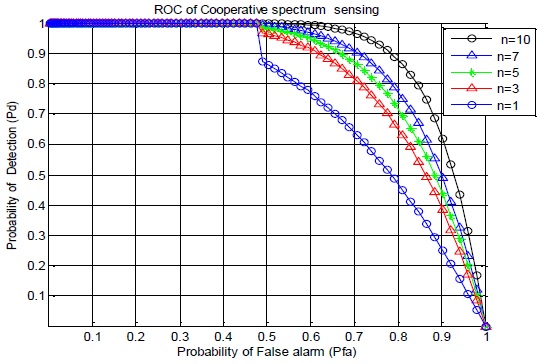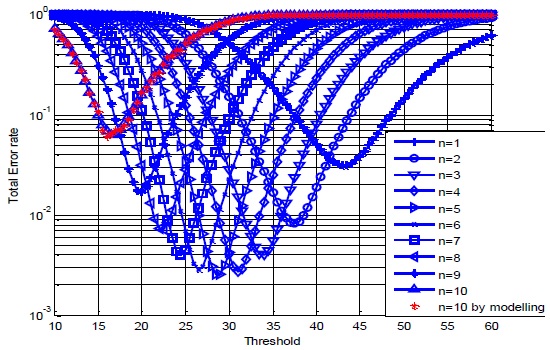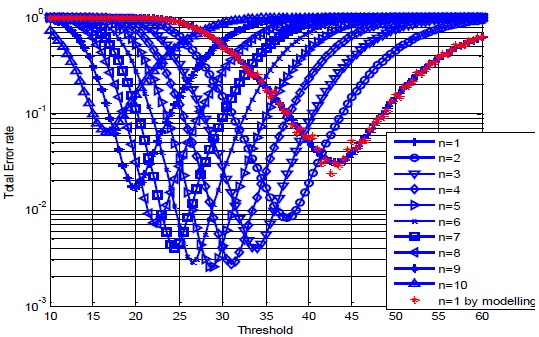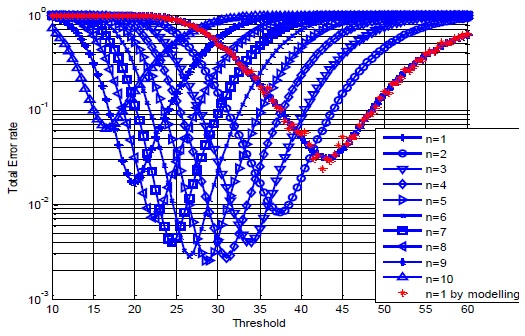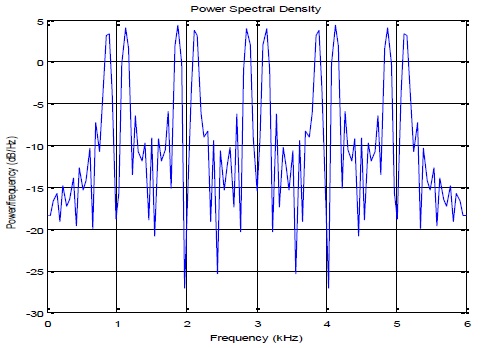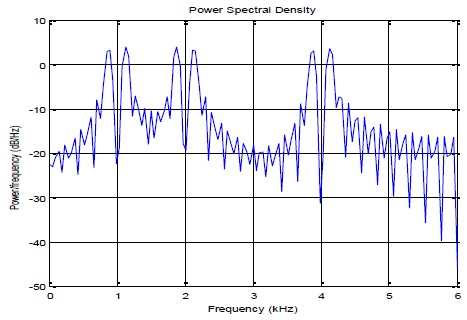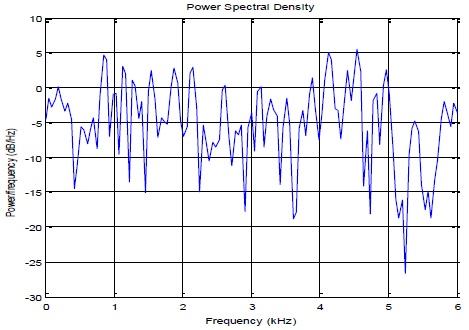1. Introduction
Spectrum sensing methods, for instance, matched filter and cyclostationary detector outperforms the softened hard decision fusion energy detection method. A two-bit soften-hard decision fusion algorithm is more appropriate for producing the intended results than the conventional double threshold method following censoring policy. While the soften-hard decision fusion algorithm provides fine sensing and increases the detection probability with trade-off between probability of detection and complexity. The very essence of the algorithm lies in dividing the subregions and giving importance to the confused region. The detection probability gets increased by increasing the number of subregions between the two thresholds.
Spectrum resources are increased because of the improvement in wireless communication standards. Licensed/allocated bands (PU) are seemed to be underutilized because of spectrum allocation and sensing (Wasden et al., 2012). Cognitive radio (CR) makes the effective utility of spectrum. Spectrum accesses are overlay and underlay (Salameh et al., 2014). For spectrum overlay, secondary users (SU’s) provide minimum interference to PU, whereas for spectrum underlay SU’s communicate with minimum interference to PU (Wang et al., 2014).
1.1 Functions of CR
There are a variety of functions of CR, namely, spectrum sensing, spectrum sharing, spectrum management and spectrum mobility. A scheme that detects the unexploited spectrum and distributes information with no intervention to PU’s is spectrum sensing. The various types of sensing include cooperative spectrum sensing, non-cooperative spectrum sensing and interference-based detection sensing. At a specific moment of time, the utility of the spectrum hole in any network is chosen by spectrum sharing.
A process that exchanges its frequencies of operations between the users is spectrum mobility. Spectrum management is one in which allocations among users are established without interference to primary user.
There are various issues with the function of CR, particularly, with the spectrum sensing mechanism. The value of SNR decreases; fading and dispersion coefficients of channel complicate the nodal sensing problem. Noise level (or) noise power with time and location of user is a noise power uncertainty issue (Yang et al., 2016) that occurs in sensing.
The hypothesis test is applied which is a technique of geometrical decision of users using an experimental data. For the common receiver, fusion logic is employed XOR-ing (or) OR-ing which minimizes the reporting error. The spectrum hole is defined as an open or empty space left in the allocated bandwidth (Zhu & Zhao, 2016).
Sensing enhances the network throughput, distributed implementation and reliable performance even under the mobile nodes. SU’s senses multiple channels prior to transmission which increases the sensing load. This is overcome by using one shot sensing (Masri et al., 2012) 40% throughput is achieved at the rate of 3dB gain.
Energy efficient (EE) cooperative spectrum sensing, the slanted user size for soft decision fusion is used in the direction of obtain effective energy. This method provides portable devices with high spectrum and less energy utilization subject to the finding recital constraint (Chowdhury & Akyldiz 2011).
Fusion center is used as cooperative spectrum sensing. For larger number of CR users; OR rules works and for minimum users; AND rule is applicable. Various rules are applied for sensing the users in the allocated band (network). 22% throughput is achieved (Lo et al., 2011). A primary attack exists in the network. Decision rules are applied to calibrate the network properties. Parameters of SNR and receiver operating characteristics (ROC) are analyzed with the probabilities of false alarm (Pfa), detection (Pd), and missed detection (Pmd); the analysis is done under fading and the AWGN channel effect (Luo et al., 2011). A comparison of various sensing techniques is carried out. CSS is carried under fading and shadowing effects. It is a scheme which overcomes the hidden terminal problem. Relay is suggested as an apt method to minimize the power consumption (Rahman et al., 2009).
2. Materials and methods
Spectrum sensing is a scheme to detect the spectrum holes. This involves various detectors like matched filter detector (MFD), energy detector (ED), cyclo stationary detector (CSD), wavelet detector and covariance detector.
2.1. Matched filter detector
An optimal method for detecting PU when the transmitted signal is known and these methods of detection maximize the output SNR for a given input signal as shown in Figure 1. Even in the inclusion of Gaussian noise the maximum value of SNR is achieved. The knowledge on primary user (PU), which involves frequency difference, operating range of frequency, modulation type, pulse shaping and frame format, is required before the transmission for MFD.
Let γMFD be the threshold of the transmitting signal; then, the received power of the path loss model is given by:
The major drawback of this detector is that the detector requires authorized sensing information for all primary users. Prior knowledge of the transmitter is required for MFD, which increases the power consumption.
2.2. Energy detection method
This technique does not require the earlier information on the essential client; but it may require the thought on the detecting time to accomplish the ideal likelihood of identification and likelihood of false alert. Constraints happen because of noise vulnerability and foundation obstruction.
For the received signal more prominent than limit the force is known and power outside the apportioned band is not known. The periodogram method is used for power calculation in CR and is expressed as
Where γED- threshold energy level in energy detector Z allocated band region
The significant disadvantage of this recognition technique is that this detector takes longer time to accomplish high likelihood of location and this method is not applicable for partitioning the licensed and unlicensed region.
2.3. Cyclostationary energy detection
A sign is supposed to be cyclostationarity if its autocorrelation is an intermittent capacity of time for a given limit area. In the event that X is a zero mean constant sign, at that point its autocorrelation is:
The chance of occurrence of false alarm and detection for CSD is given by:
This method is not suitable for stationary noise. Even a signal with low strength (SNR) can be easily detected.
Figure 2 explains the comparative study on the types of spectrum sensing. From the results, it is proven that the energy detection-based method is an effective scheme for control channel design in the cognitive radio network.
3. Cooperative spectrum sensing (CSS)
Power spectral density should be calculated before transmission so that it checks the signal availability. A hidden terminal problem is helpful in ensuring that the PU band is protected from interference. CSS is a scheme that eliminates the hidden node problem. The operations of CSS are as follows:
SU has the capability to calibrate its own measurements through the channel and makes the availability of users.
SU either transmits or receives the required information through control channel.
Fusion logic is applied to the network. A large network of CR that exchanges the information would make a better chance of PU compared to SU.
More than one radio (hub) is expected to cowork with one another. Every hub gathers information for the identification of the essential client. Gathered information is planned in the fusion center and the ultimate conclusion is made as portrayed in Figure 3.
Limit 'n' is a whole number, in the "M-out-of-N" rule. It very well known that the OR rule relates to the instance of n = 1 and AND rule compares to instance of n = k. It is expected that, when contrasted and good ways from any subjective radio to the essential transmitter, the separation between any two cognitive radios is little, with the goal that the signal at each intellectual radio encounters practically indistinguishable propagation loss.
The relation between the false alarm probability and the complementary functions of the cooperative spectrum sensing is given by formula Qf:
The missed detection probability and the complementary function of supportive spectrum sensing is given by:
“OR Rule”: The ultimate choice of H1 is made when, at any rate, one CR client reports an H1 neighborhood choice.
“AND Rule”: The final choice of H1 is made just when all the CR clients report an H1 local decision. This sensing scheme eliminates the hidden node problem, and hence, false alarm and signal detection are more accurate; however, it provides poor synchronization and it also requires control channel for signal transmission.
Parameters to be calculated depending on the number of antenna. An increase in the antennas increases the capacity and it delivers a better transmission quality and an increased coverage area (Bellanger et al., 2011). The Neymen Pearson (NP) test and Bayes test (BT) are applied for the MIMO spectrum. Using the NP test, there is a better detection probability at the tradeoff between missed detection is provided.
4. Results and discussion
Simulation results were taken on MATLAB under a mathematical modelling channel. Receiver operating characteristics (ROC) investigation is performed for the sign recognition hypothesis to consider the exhibition of the energy finder. ROC has been generally utilized in the sign recognition hypothesis because it is a perfect skill to measure the tradeoff between the likelihood of discovery (Pd) and the likelihood of missed location (Pmd), as shown in Figure.4.
Figure 5 delineates the variety of likelihood of identification with the estimation of likelihood of false alarm. Before digging into seeking after the specific ideal arrangement of 𝑛, the error rate as far as the recognition limit for different voting guidelines from n = 1 to n = 10 of every cognitive system with 10 clients.
The ideal voting over all the analyzed scope of the discovery edges is displayed in Figure 6 for n=10 and the recognition esteem is depicted in Figure 7 for n = 5. Notwithstanding, for a fixed exceptionally little limit, the ideal principle is AND rule, i.e., n = 10; then, for a fixed huge edge, OR rule, 𝑛= 1, will, in general, be ideal.
AND rule is ideal when 𝛼 → 0. This is accomplished when Pm << Pf, for an exceptionally little.
Normally, Pf and Pm have a similar request, i.e., 𝛼 ≈ 1; thus, the ideal decision of 𝑛 is 𝐾/2, as portrayed in Figure. 8. OR rule is ideal when α ≥ K-1. This suggests Pf<<Pm for an enormous worth 𝐾. This can be accomplished when the recognition edge 𝜆 is extremely enormous.
Figure 9 shows the spectral density of the transmitted signal. For reference, the low frequency signal is considered as the PU. Initially, 5 users are considered to be present in the network.
Here it is shown that the third user does not exist in the network for a particular duration of time. This free band will be allocated to the next user according to the need and demand and that is shown in Figure. 10.
Figure 10 shows the allocation of users for the free band in the network. The network continuously monitors the availability of the signal; once PU leaves the network to the created hole, SU is utilized with minimum interference for the PU.
Figure 11 displays the addition of noise to the existing CRN. This noise either attenuates the signal or amplifies it depending on the occurrence or nonappearance of the signal. Depending on the value of normalization, the spectrums are allocated as shown and explained in Table 1. As the power consumption is tried with the available network, this type of sensing is called green sensing
Table 1 Simulation terms used for spectrum allocation and sensing.
5. Conclusions
An FBMC-based channel design was carried out. Among the sensing functions, various detection methods were considered and proved that energy detector is a suitable method for the design of a control channel. The hypothesis test rule and the voting rule were applied for the sensing mechanism to calculate the spectral density. The power consumption in the network was considered for the analysis. Since power is saved, this sensing scheme is known as green sensing in cognitive; it has been proved for the minimum interference to the PU.











 nova página do texto(beta)
nova página do texto(beta)

